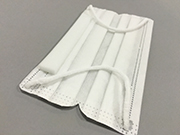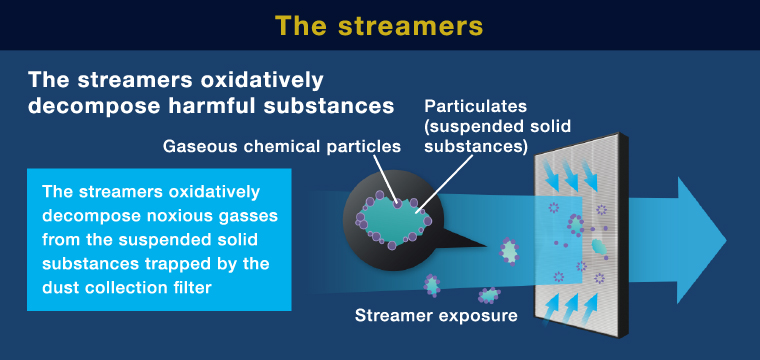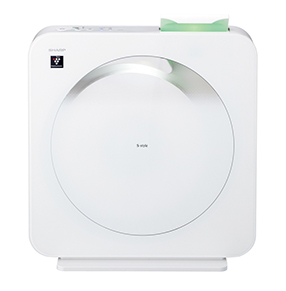Web Japan > Trends in Japan > Tech & Life > Protecting the Body from Pollen and Other Allergens by Using Technology and New Ideas
Protecting the Body from Pollen and Other Allergens
by Using Technology and New Ideas

Various allergens can cause hay fever, depending on the person. Some people have multiple allergies.
Many people in Japan suffer from hay fever and can be seen wearing masks when spring arrives. Face masks sold in Japan have an extremely tight weave, so dust and pollen particles cannot pass through them easily. In addition, a full range of alternative anti-pollen measures exists, including air purifiers and sprays that prevent pollen from attaching to one's hair and clothes.

In spring, copious quantities of cedar and cypress pollen from trees planted on the mountains mix while airborne, and many people living in cities develop hay fever. The white smoke visible at the bottom right of the photo is pollen.
Causes and Symptoms of Hay Fever
Hay fever, a source of worry for many people in Japan, is a reaction to allergens including pollens from plants such as cypress, ragweed, Japanese alder, and Japanese mugwort, as well as contaminants such as mites and house dust.
Typical symptoms of hay fever are sneezing, a runny or blocked nose, and itchy eyes. In some cases, the skin may become itchy or a fever may occur. In Japan, various technologies and ideas have been developed to protect the body from pollen and ease hay fever symptoms in order to make life more bearable.

There is a wide variety of masks that prevent entry of dust and pollen. From left: a mask with a menthol scent; a mask equipped with an ear-protection feature; and a mask that closely fits your nose, cheeks, and chin without leaving any gaps.(Courtesy of Unicharm Corporation and IRIS OHYAMA INC.)

Types of masks that enable easy breathing even when used for a long time are popular.

In this scented mask, fragrance-emitting capsules are built into the sponge that makes contact with the nose.(Courtesy of IRIS OHYAMA INC.)
Evolving Masks
Face masks are often considered indispensable items when hay fever symptoms appear because they prevent allergens such as pollen and mites from being inhaled. Over recent years, mask technology has evolved rapidly, and in Japan there are many types of masks including those equipped with new functions such as eucalyptus oil capsules that emit a pleasing menthol aroma when broken with a finger, which makes the nasal passages work better. This has the additional advantage of counteracting unpleasant smells inside the mask that develop if it is worn for a long time.
Other innovations include masks that fit snugly to the face, developed by surveying facial data from 40,000 Japanese men and women. Pleasant wearability is achieved by making masks fit closely around the cheeks and nose, using materials that are gentle to the skin, and ear hooks that do not cause pain or irritation even when worn for a long time. Of course, preventing the entrance of pollen and airborne viruses is also a hotly pursued feature of face masks.
Trapping and Eliminating Airborne Pollen

Various technologies, such as special electrical discharge, are used to collect and remove pollen and mites from the environment.(Image courtesy of DAIKIN INDUSTRIES, ltd.)

A compact air cleaner equipped with a mechanism to trap dust and pollen using static electricity.(Photo courtesy of SHARP CORPORATION)
Products that influencing the human environment itself have also been developed. One example is air conditioners, and another is air purifiers developed by Japanese electrical manufacturers. These products have functions that collect and remove small particles such as pollen. Along with advances in miniaturization, each company is developing many products equipped with great features.
Manufacturers have ensured that many of their designs are compact and can be moved easily from room to room. They use static electricity to absorb dust particles and are equipped with filters capable of stopping tiny particles of pollen.
Additionally, there are air purifiers with the ability to collecting pollen from the air that also designed so that they do not draw attention to themselves even when placed alongside other furniture.
In this way, Japan is continuously developing products that satisfy the needs of healthy and pleasant living while further evolving anti-hay fever technologies.
